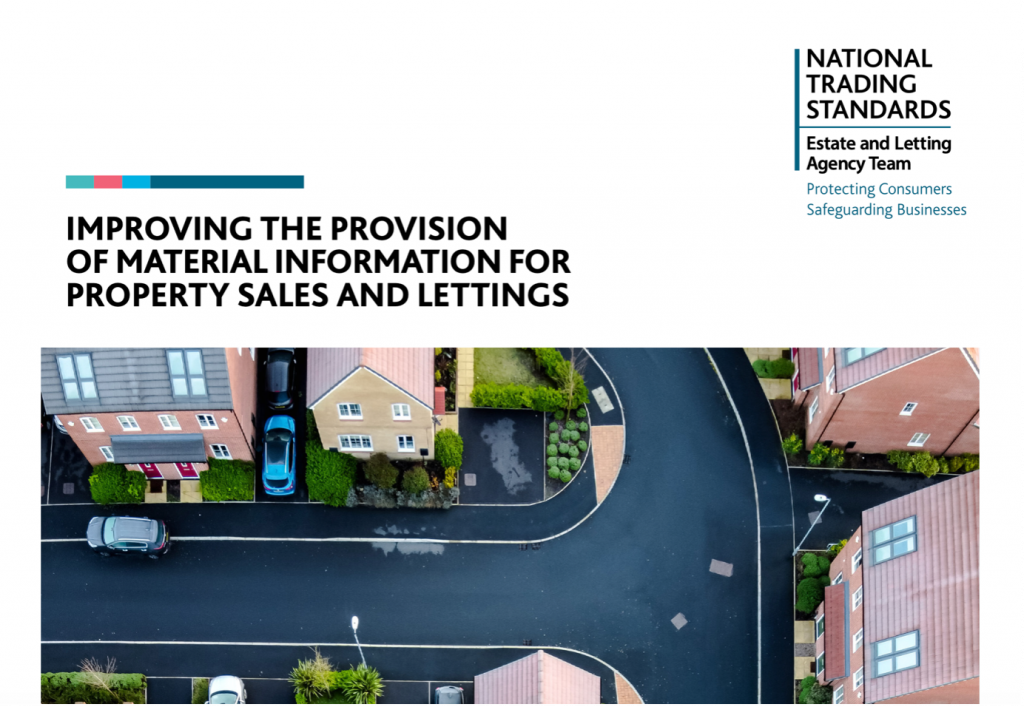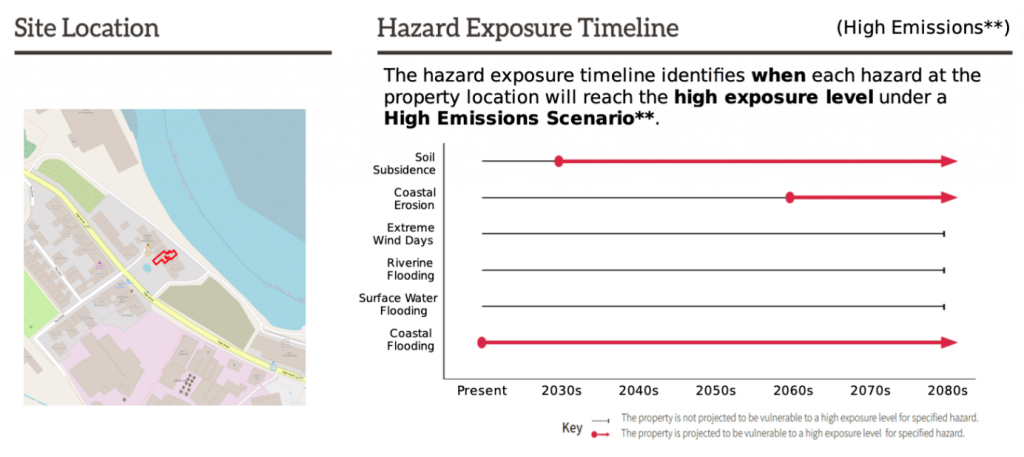On Wednesday 24th January, a seminar on Material information for property marketing was held in the Alverton Manor in Truro. This was sponsored by upfront property information provider YourHomeReport, property search supplier PSG Cornwall and property data provider Dye & Durham. It was well attended with 37 present and a further 21 online.

Introductions
Simon Gill from YourHomeReport opened the seminar with a summary of material and upfront information. Consumers and professionals involved in the UK property market face numerous challenges. National Trading Standards quote research which says that consumers lose on average £1,571 and estate agents £4,123 in commission for every property which falls through. And yet according to the Home Buying and Selling Group, this happens in 24% of cases. Furthermore, everyone involved in property sales faces considerable uncertainty until the point of exchange. The Material Information guidelines from National Trading Standards seek to reduce some of these challenges.

Some property marketing history…
Simon introduced John Tutchier from Cornwall Trading Standards. John started by taking us back to the 1968 Trade Description Act, discussing the foundations of legislation covering property marketing. This was a very loose regulatory framework and it was very difficult for agents to know how to comply. The much more specific Property Misdescriptions Act of 1991 gave agents a framework to ensure compliance with the law and contained prescriptive terms to focus attention. Then in 2008, the Consumer Protection from Unfair Trading Regulations replaced the Property Misdescriptions Act, starting a significantly less prescriptive and therefore more challenging regulatory environment. It gave estate and letting agents the legal obligation not to omit material information from property listings, but it has been up to agents to decide what this is. Material information can be described as the information which is required by the average person to make an informed transactional decision – basically, whether they decide to enquire, view, or buy/rent a property.
The legislation covering the marketing of products has been clarified by case law leading to four underlying principles which, in a property context, are as follows:
- Have agents acted with professional due diligence in their assessment of what is material information related to a property?
- Is the property marketing a true statement of fact?
- Is any material information foreseeable and hence should be included in property marketing?
- Has the agent taken reasonable steps to ensure that material information is identified and verified?
Material Information Guidelines:
On 30th November 2023, National Trading Standards released long-awaited guidance on what is material information. This is split into three parts – Part A is always considered material and includes items such as council tax banding and tenure. Part B covers issues which may involve additional costs or availability of insurance or mortgages or affect the use or enjoyment of the property. This includes for example utilities and parking. Part C includes information which may or may not need to be established depending on whether the property is affected or impacted by the issue in question and includes issues such as mining and flooding.
This places obligations on agents:
- Agents should proactively request material information to create particulars;
- Verification checks should be undertakenon the information provided to ensure accuracy;
- Material information should be prominently and clearly displayed;
- Property listings should be updated, and interested parties informed, as soon as possible when material information becomes known or has changed.
John reminded the audience that these guidelines apply to lettings as well as property sales, with separate guidance provided for each. Material Information is prescribed in the guidelines and agents must consider additional issues specific to the locality, the potential buyer or the actual property. For example, for students renting in Falmouth parking provision is more important than for a large rural property. Or selling a property in St Ives mentioning a risk of flooding.
Some illustrative examples…
Through various examples, John illustrated key points in the material information guidelines:
- Underpinning – some properties in a development required underpinning after the initial build. When one of the underpinned properties was sold, the agent was not told about it and did not reflect this in the property particulars. However, a survey revealed the existence of underpinning. It is important to note that even though the property was sold subject to contract once a survey revealed the need for underpinning, all marketing materials should have been changed as soon as practical and all interested parties informed. A neighbouring property was later sold as a deceased estate and the executors did not know whether it was underpinned or not. In this case, agents must use professional due diligence (e.g. observation of the property and knowledge of the developer or development) to consider if the issue is foreseeable and they should take reasonable steps to verify this material fact;

Undisclosed burial – in 1985 a man died and was buried in the garden of his property, with no requirement at that time to declare the burial to the local authority. Some time later the man’s wife died and the property was put up for sale. The executors had no knowledge of the burial and it was therefore not declared in the Property Information Questionnaire and the property was sold. When the new owners started constructing an extension the burial was discovered. It was tested in court whether the agent acted correctly in this case. Was it reasonably foreseeable that there was a burial in the garden? No, it was identified that there are no searches available to check this and it was not a foreseeable material fact;

Undisclosed footpath – a property was sold and the new purchaser discovered an undisclosed footpath across the property boundary. There was nothing written about the footpath in the property marketing. The investigation concluded that there was negligence by omission as the property was in a rural location and there were clear footpath signs in the vicinity of the property. Also, it is a reasonable step to check this via a simple search of the local authority’s interactive footpath map.

Removal of access – A developer purchased a property in which the particulars revealed a rear access. Once completed the developer arrived at the property to find that a neighbour had bricked up the access. Once Trading Standards investigated, they found that at the time of taking on the property the access was present and the particulars represented a true statement of fact. They had not had reason to re-visit the property during marketing, had no knowledge of the removal of access and it was not reasonable to think that the access would be removed. As a result, there was no failure on the part of the agent.

Unmortgageable property – A self-build property was not built according to building regulations and defects were hidden behind plasterboard. After 10 years the owners put the property on the market and the agent wrote details which did not mention these defects. A potential purchaser conducted a full structural survey which revealed the defect and that this made the property unmortgageable. The purchaser pulled out and the owners moved agents. The new agent was not informed of the defect by the seller but by chance discovered it. As a result, they passed it on to their in-house auctioneer who, due to a communication breakdown, failed to reflect the defect in their property particulars. They were therefore found to be negligent.
Practical Implications of Material Information Guidelines
Simon addressed some of the practical implications of the Material Information guidelines. The starting point for much of the material information is by asking questions of the owner, using a Property Information Questionnaire. However, some of the information can only be accessed via external data services and the guidance states that agents are required to verify the accuracy of material information. It is also made clear in the guidelines that agents are not experts (particularly concerning Part C) and hence it may be prudent to seek the services of other property professionals including surveyors and solicitors.
Surveyors may be required to support agents in relation to the physical characteristics of the property (e.g. Material and construction types) and building safety (e.g. integrity of building materials used in construction and risk of collapse). Solicitors would be required to help with restrictions and rights (e.g. restrictive covenants and land charges) and with easements (e.g. public rights of way).
Free-to-access data is available to answer some questions (links are provided in Simon’s presentation) but this does pose challenges. Accessing free information is time-consuming, is sometimes tricky to use, is incomplete and can take up to 20 days to arrive. Critically, it is also very difficult to provide the required evidence in the case of disputes. Agents must ask themselves if this approach gives them the peace of mind that they have acted reasonably in obtaining or verifying the material information.
YourHomeReport has been running a trial of upfront property information for over 12 months. It has been hugely successful and has had considerable success. Firstly, most of the vendors (73%) that used this instructed their solicitors when they put their house on the market and 82% started gathering the required paperwork leading to immediate time savings. Furthermore, the YourHomeReport trial identified forgotten property owners, found inconsistencies in property boundaries, enabled the local search to be generated in 24 hours once a purchaser was found and gave useful information about the quirks of buying in Cornwall.
YourHomeReport covers much of the Part C guidelines:
- Land Registry Documents (to identify owners and property boundaries)
- Energy Performance Certificate (if required)
- Local Land Charges (e.g. conservation areas, Article 4 directions etc)
- Public Rights of Way (e.g. footpaths crossing or abutting a boundary)
- Planning Permissions (related to the property being let/sold)
- Planning Search (outlining permissions in the vicinity of the property)
- Flood Search (if any flooding has occurred in the area and how this impacts insurability and borrowing)
- Mining Search (outlines historical mining activity in the vicinity of the property)
- Local Property Purchase Factsheet (to explain the quirks of buying and letting in Cornwall)

This report is available to order online now for £79.00.
Conclusions
This seminar provided useful information and valuable insights into the legal and ethical responsibilities of estate and letting agents in the marketing of properties. It underscores the significance of transparency, disclosure, and professional due diligence in ensuring compliance with the Consumer Protection Regulations and meeting the informational needs of potential buyers and tenants.
Various questions were asked on the day and in advance of the event. John is preparing a Q&A document which will be shared once received. This is the start of a debate about how this will be implemented and as time progresses we will have the opportunity for further discussion.
